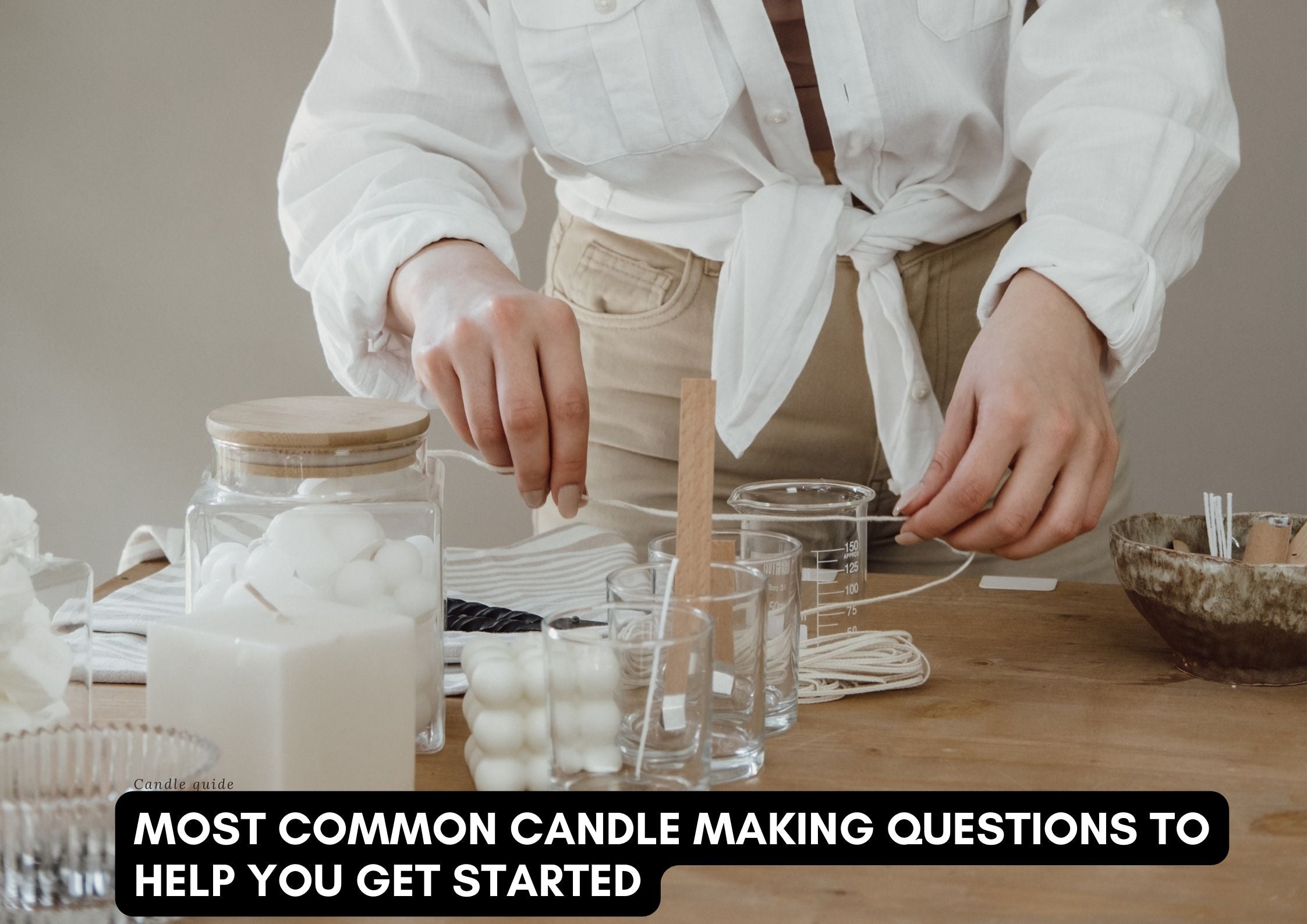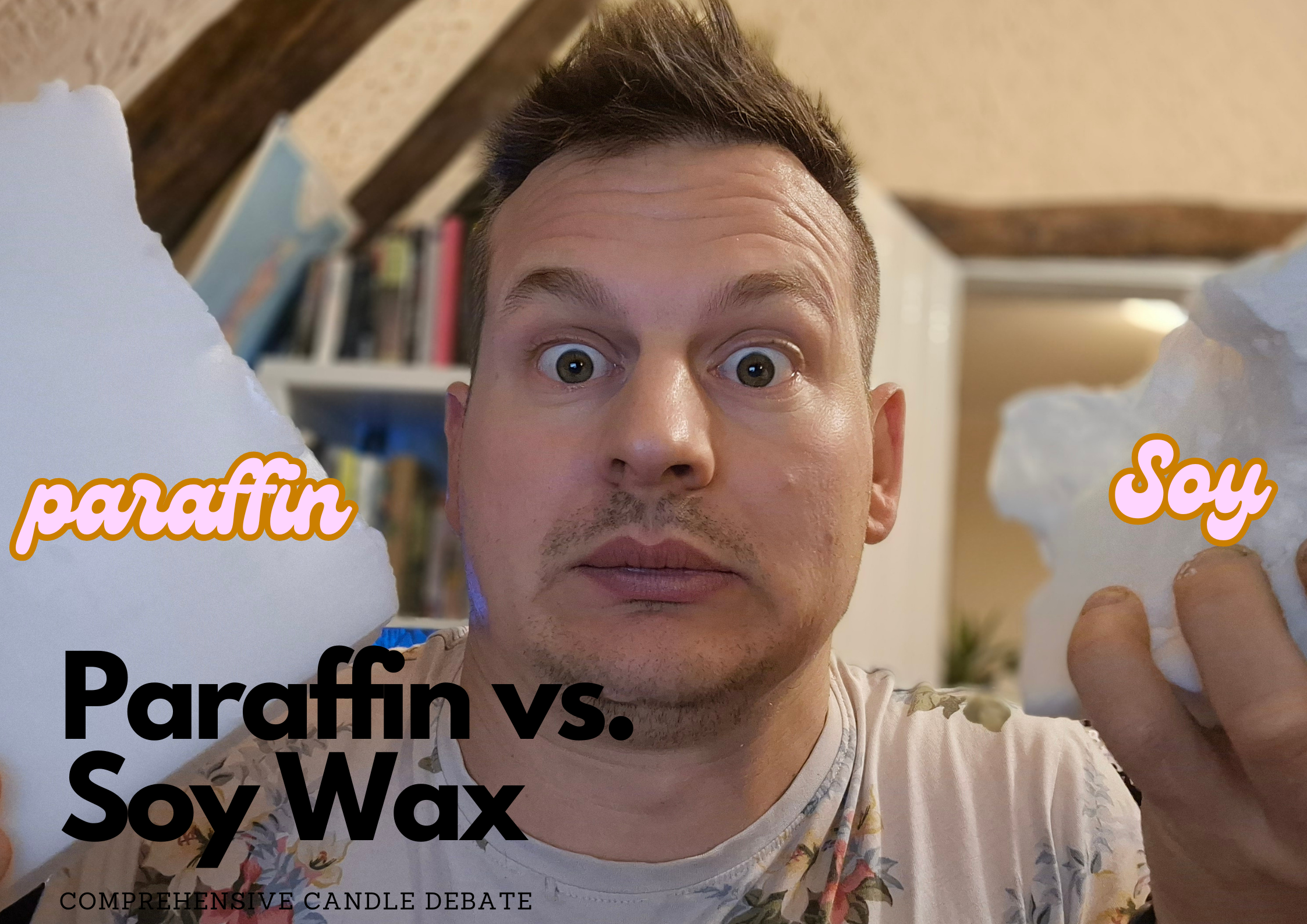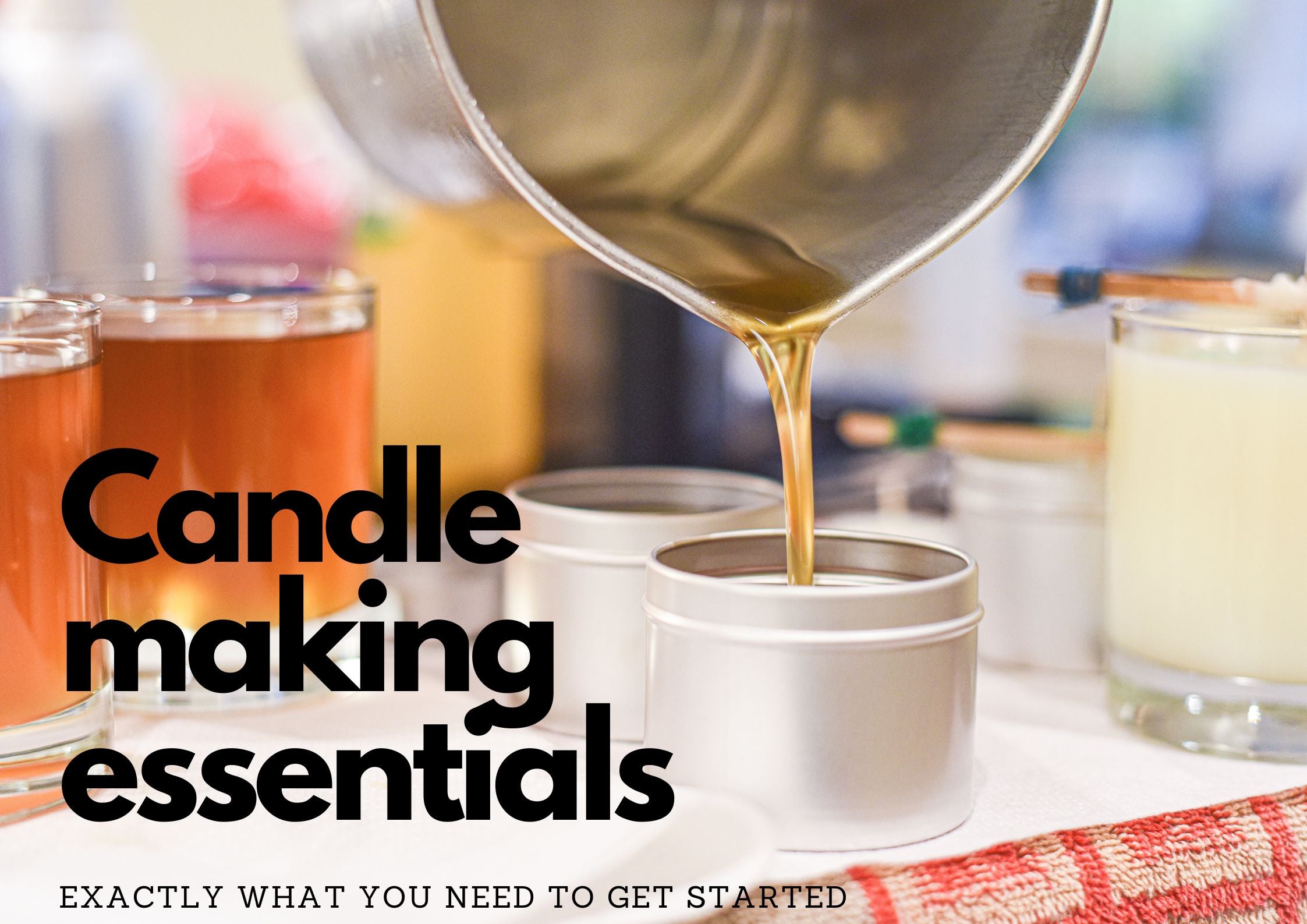Common candle making questions
Nov 02 , 2022
When you are preparing to start your own candle making business, there is a long and time-consuming learning process that requires thorough research. You will have to learn a lot about the different types of wax, the oils as well as the right quantities and temperatures. This can be exhausting but will be worth it. To make the process a bit easier for you, below you can find the most common candle making questions to help you get started. These will give you an answer regarding the business itself, candles in general, the techniques and ingredients as well as the most common mistakes and solutions. So let’s see what you need to know!
About the business

Should I start a candle making business?
This is the question you should start with and you definitely have to do your research. Before jumping in the middle of it, investing in all those ingredients and equipment, you should find out a lot about the candle making business. Without that, you might end up with a pretty decent loss and no business to start. Basically, you will have to figure out the two major sides: the technical part and the business part.
Firstly, you should know that candle making is a complex process which requires time consuming learning and continuous improvement. Unlike some blogs suggest it, you should really take it seriously if you want to make good quality and most importantly safe candles.
Regarding the business side, you should know that even running a smaller business means handling a wide scope of activities apart from just candle making. You have to handle inventory, manage your finances, be responsible for customer service and use marketing and branding tools. It is not easy and will take up most of your time in the beginning.
How difficult it is to learn candle making?
The technical part of candle making is not as difficult, but you’ll have to learn a lot as a beginner. You have to know your ingredients and equipment and you should learn a lot about the right amounts and right temperatures. Knowing your ingredients means being able to choose the right wax, essential or fragrance oil and colouring additives as well. But if you have the patience for it, you shouldn’t have any problem.
About candles in general

Are candles really that popular?
Yes! Candles have a long history but they have never lost popularity. I would say, at least 80% of households keep candles at home. Either from practical reasons or for the atmosphere they create, most of us enjoy lighting a candle from time to time. Not to mention the fact, that it is a generally popular gift option as well.
Are scented candles safe for me?
Candles are safe in general, so yes, scented candles are also safe. This means, that they have no negative effect on your health and can’t cause breathing issues. However, there is always the fire hazard. This means that lighting a candle is only safe if you secure its place and don’t leave it unattended. So the safety of the candle is both the responsibility of the maker and the user.
About the techniques

What are the most common wax types?
The most common wax types are paraffin, beeswax and soy wax. In order to choose the right one for you, you should know a bit more about them.
Paraffin has been the most commonly used for decades, but is slightly less popular nowadays. The reason is the fact that it is a by-product of oil refining and thus not so eco-friendly and natural choice. Its popularity is mostly based on its price, as this is the cheapest option.
Beeswax is a natural choice so depending on your marketing strategy, it can be a good choice. However, it is more expensive and not vegan.
The increasing popularity of soy wax is due to the fact that it is both eco-friendly and vegan. Producing vegan candles has become more and more common, and for many businesses, this became the core of their branding strategy.
Also, different types of candles work best with specific wax types, so that is also worth knowing. Generally, paraffin can be used for a wide variety of candles, but beeswax is best for pillar candles and soy wax is best for container candles.
What is the best temperature to pour wax?
There is no single answer for this question as every wax works differently. You have to learn how to melt and pour your chosen wax before starting the candle making process itself. Let’s see the most common types.
Paraffin has a melting temperature of 115-150 °F and you should pour it at 160-180 °F,
Beeswax has a melting temperature of 145-149 °F and you should pour it at 150-170 °F.
Soy wax has a melting temperature of 110-125 °F and you should pour it at 130-150 °F.
Which oil to choose?
This is also an important part as most candle makers produce scented candles. For that, you will need to add oils. The two big groups are essential oils and fragrance oils. But what is the difference and how to choose?
Well, essential oils are natural oils derived from certain plants resulting in one single scent, such as cinnamon or lemon. They can be used when you would like to have aroma therapeutic effects, such as making candles for stress relief or for better sleep. Fragrance oils are made by mixing different oils and scents to create a unique scent, such as the scent of ocean or Christmas. You should choose them if you don’t feel like experimenting with essential oils and would like to choose the prepared mixtures.
How to find the perfect wax-oil ratio?
This again depends on the choices you made about your ingredients and will require some experimenting and testing. However, if you would like a general answer, most candle makers advise to use 6% per pound of wax. This can give you a start, but you will always have to test it with the specific wax and oil combination you have chosen.
About the most common mistakes

Why does my candle flicker?
There are several reasons for this problem, but it’s safe to say that the most common is a too long wick. As a too long wick will result in a bigger flame and too quick burning. You can simply fix the issue by trimming the wick and trying to light the candle again.
Why does my candle have no scent?
If your scented candle doesn’t have a nice throw, you have made a mistake when adding your oils. It could be either not adding enough oil, or adding it at the wrong time. As you could see above, different waxes have different melting and pouring temperatures. But they also have specific temperatures at which you should add the oil. So make sure to do your research on your chosen wax type.
Why is my candle sweating?
Sweating means that your candle has a thin layer or pool of oil on the top or side of your candles. It can be the result of adding too much fragrance oil, adding it at the wrong temperature or not mixing it well enough. So make sure to pay attention to that part the next time!
Why does my candle have black smoke?
Another common issue with rather simple explanation. If you see that your candle burns with excessive, often black smoke, that is always a sign of imperfect burning process. The cause of the issue is usually a too long wick, and the solution would be to trim it.
Why did my candle sink on the top?
A rather annoying issue would be the sinkhole on the top of your candle. If you experience that, you can be sure that you did something wrong with the temperatures. It can be either that you didn’t allow your wax to cool before pouring or didn’t warm up your container before. The solution is easy, you can simply melt the top of your candle with a heat gun to even it. But on the long run, avoiding a mistake is always better than correcting it. So keep in mind that the right temperature is always the key!
Why are there bubbles on the top?
Another problem with the top of your candle, bubbles. These small bubbles cause an uneven top which is not so pretty. Luckily, the reason and the solution are both easy. Usually, it is caused by stirring the added oils for too long which will result in small bubbles in the melted wax. The solution is the same as above, smooth the top with a heat gun!
It is safe to say that any single problem or issue you face during the learning process is something thousands of candle makers have faced already. Which is great news as it will help you learn and perfect your technique more quickly. This is especially true about the most common mistakes and knowing them will help you avoid them. So keep all this in mind and you are good to go!





